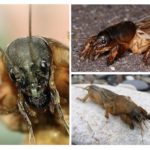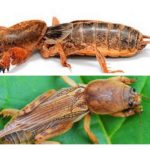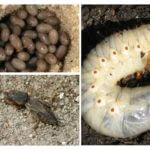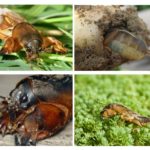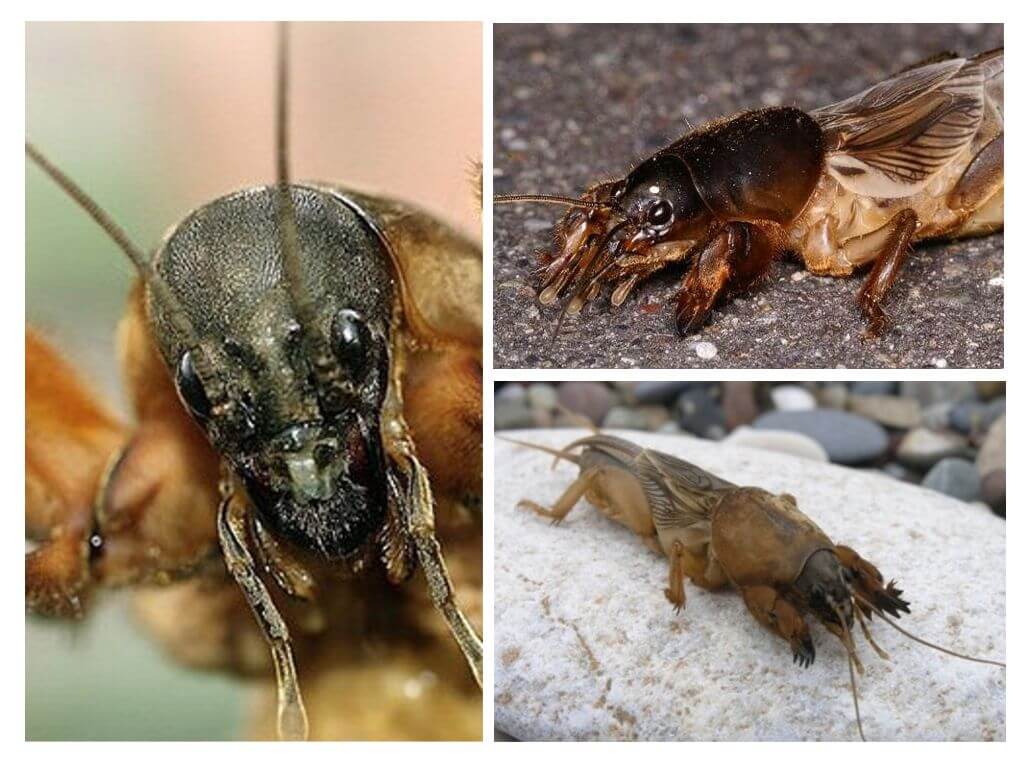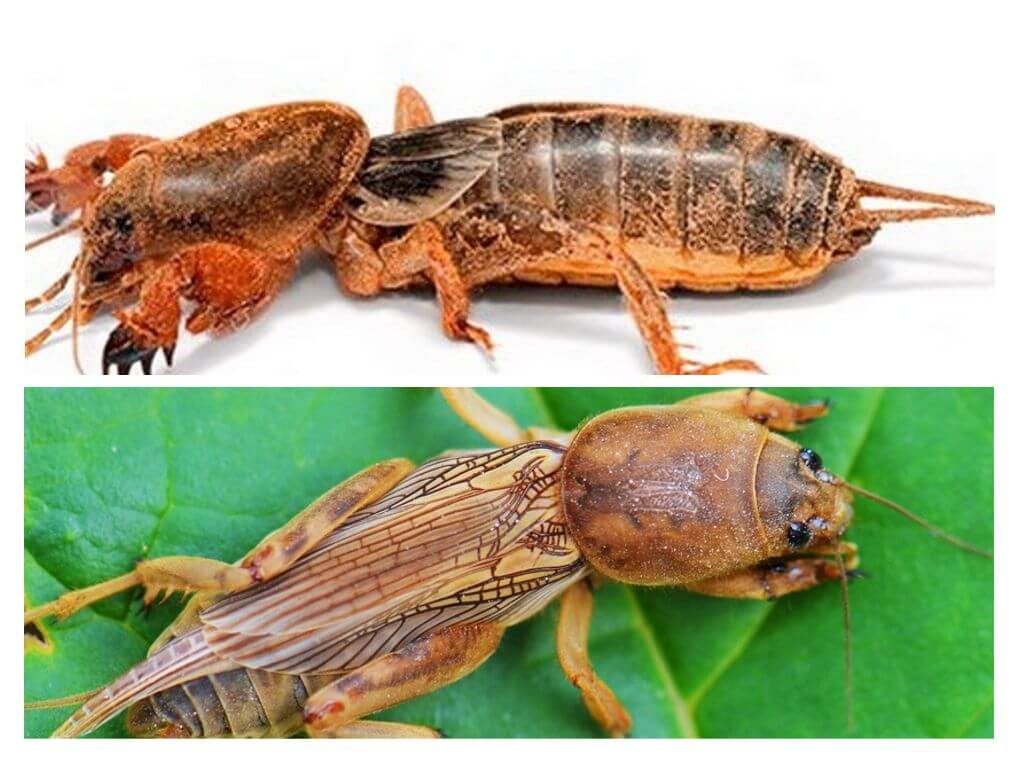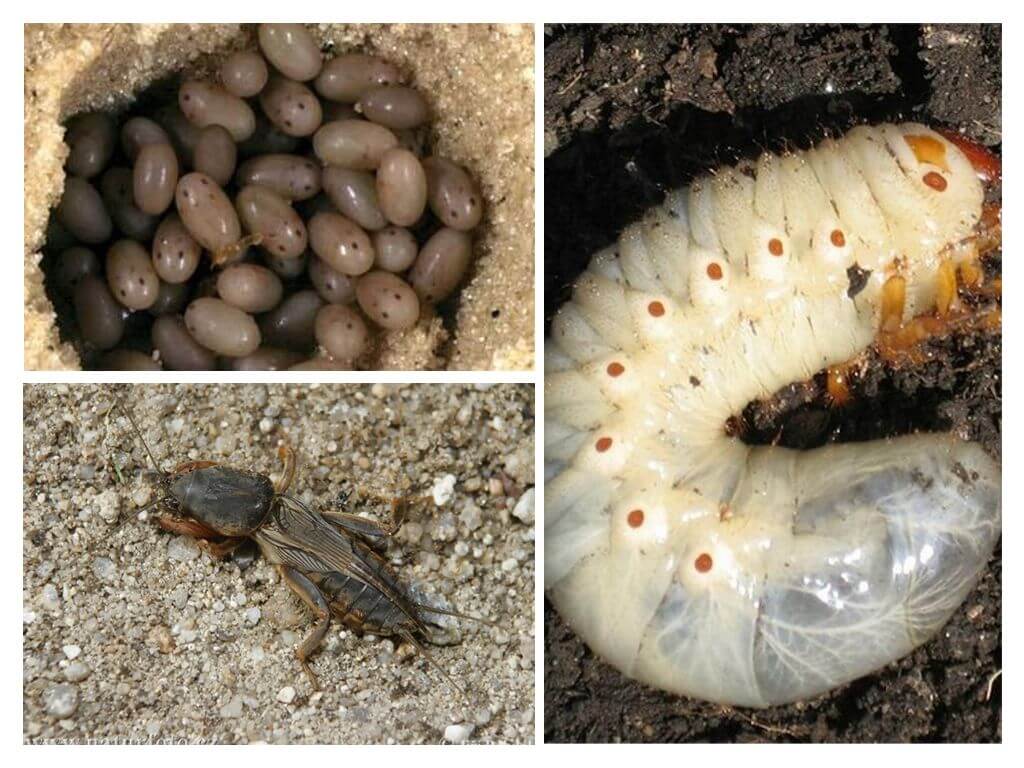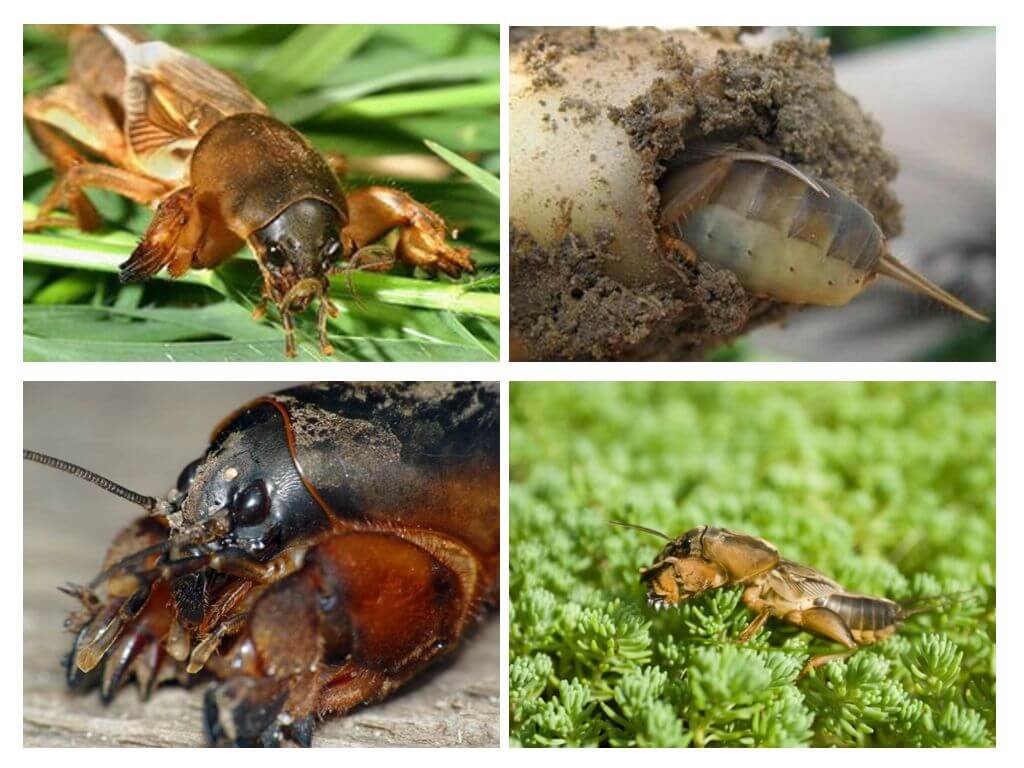What does the bear and its larva look like?
Content
- Kapusyanka
- Medvedka
- Larva bear
- Habitat of the bear
Rod Medvedka belongs to the order Orthoptera. In the world there are about 100 species of these insects. Grasshoppers, crickets, locusts are in the same detachment with it. Other names - kapustyanka, earth shrimp, spinning top. Their origin is associated with the characteristics of life, behavior, appearance. Has a large body size, an unusual appearance, feels good in any environment - is a real masterpiece of evolution.
Appearance
Looks like a bear and its larva can be seen in our article.A unique creature like no insect. Photos kapusyanki you can see below, to get information, who such a bear.
Common Medvedka reaches 7 cm, without mustache, tail. With them, the length of an adult insect is 12 cm. The photo of a garden bear looks eerily eliciting various legends - insect bites, poison is deadly, etc.
Photo and description of the bear:
- Large insects with a cylindrical body shape, folded wings on the back reach sizes of 12 cm, but the average body length is about 5 cm.
- Small, but prominent eyes, like those of cancer, are clearly visible on the head.
- The forelegs are spatulate, equipped with several claws. Strong, massive, designed for digging the soil.
- The second pair of limbs are long, thin, mobile. It helps the insect to crawl quickly on the surface of the earth.
- Hind limbs slightly longer than the rest, springy. Allow you to jump well.
- Abdomen, head protected by dense shell. The abdominal cavity is 2 times the chest. The photo of the bear shows it well.
- There are long whiskers on the head, a pair of tentacles. The back of the body ends with a long mustache.
- Two pairs of wings are pressed tightly to the back. The first wings are oval, short. The second - long, narrow. Thanks to them, the bug Medvedka can fly, take off from the ground at 5 m in height. To describe the process of how a large insect flies, you can only one word - noisy. Such opportunities endowed only adult Medvedka.
The appearance of a particular species may be slightly different. Due to underdeveloped or missing wings, the insect loses its ability to fly. The insect of the bear is located below in the photo. Different species of this insect are distributed throughout the world. Habitat - fertile soil.
Stages of development
The insect passes through several stages - an egg, a larva, a nymph, an imago. The mating season, reproduction begins in May, the whole warm period lasts. As the bear multiplies, it looks beautiful, melodious.
The male has singing ability and arranges real trills at night with different modulations, chattering. In this way, attracts the attention of females. Mature females crawl out of their burrows, rise into the air, fly towards their fate. Able to overcome up to 8 km.
Stages of development of the bear: after fertilization, the female is taken for the arrangement of her own home, the nest. The depth of the structure depends on the characteristics of the soil. In black soil with high humidity, the shelter is located at a depth of 5 cm. In the sandy, dry - 15 cm. But it can reach up to 70 cm inland.
When the bear lays eggs, the common bear lays eggs 2 weeks after fertilization. In one laying from 25 to 60 pieces. Eggs of a bear about 1 mm in size. The female provides optimal conditions, takes care of the safe breeding of offspring.
The appearance of the larvae
The offspring is shown from the egg after 2 weeks. Medvedka larvae look helplessly - blind, sedentary, the color is close to red. The larva of the bear is in the photo below.
After the birth of the light immediately taken for food. Eat vegetable food. A few days later, the earthwalker passes the first molt, turns into a nymph, resembling an adult in appearance. Transformation into a full-fledged individual is a long, dangerous process. Only strong nymphs can handle it. The weak are at risk of dying. Photos and description of the larvae below.Before that it looks like a caterpillar, reminds grub beetlebut has some differences.
How much an insect lives - the formation of imago is slow. It takes about 2 years for the larvae to mature. During this time, the individual passes about 10 molts; at the last stage, the genitals are formed.
On a note!
The adult individual lives about 1.5 years. In artificially created conditions - 3 years. The entire life cycle lasts about 5 years.
Habitats
Where the pest lives - the family hibernates deep in the ground. The nest is built at a distance of 2 m from the surface. Can settle under a pile of manure or directly in it. With the onset of heat, when the soil warms up to 12 degrees, it activates its activity. There are traces in the garden, the results of sabotage. In countries with a warm climate is active all year round.
Nest features
Nora medvedki in the garden - a unique structure with numerous moves, exits. The main part looks like a rectangle. There the insect rests, hides from enemies, breeds. On the surface of the exit, the entrance looks like a big or small hole. Catch the bear can be in various ways.
From the nest in different directions, the moves of the crown on the ground move away. They have a spiral shape, the hole comes to the surface. In this way, the female provides free air circulation and heat. To prevent the terrain from shading the plants, the female gnaws the stems, after which the crops dry up. Laying eggs occurs at a time when the beds seedlings are planted, because of what many gardeners have to save her.
On a note!
Numerous labyrinths are located underground at a depth of 5 - 70 cm. It all depends on soil moisture. With a lack of moisture, the larvae either do not hatch, or die immediately after birth.
Behavior
Medvedka spends most of his life underground. There digs passages, builds mazes, builds nests. On the surface comes with the onset of twilight in warm weather. Searches food, or rises into the air to search for a male.
The structure of the body of the bear allows it to float on the surface of the water. She calmly overcomes a large puddle, fleeing from flooding. But if water enters the mink, the insect dies.
The heat-loving insect successfully survives the winter frosts of the floor of the soil.With the onset of heat gradually rises to the surface. The presence of a pest in garden plots can be seen as early as April. Moves are formed in the ground, footprints are visible, plants are dying.
On a note!
Medvedka is a shy creature that hides in the mink at the slightest rustle. To catch her own impossible. But if build a trapYou can significantly reduce the number of insects in the area.
Food preferences
What does Medvedka eat, it is interesting to gardeners, gardeners, lovers of flora and fauna. The bear insect is a predator, preferring plant food.
Medvedka eats land content. It feeds on roots, root crops, the green part of plants that are located directly above the soil. Finds food in the thick of the earth - small insects, larvae, earthworms. A delicacy is a pupa of other insects, a caterpillar, a butterfly.
Interesting!
The eating habits make Medvedka a useful, harmful creature at the same time. In the forest, the insect is of great benefit - it loosens the soil, saturates it with oxygen, and destroys pests. In the garden, in the garden of a bear trying to get rid of all forces. On beds, gnaws green stalks, destroys the root system, gnaws roots. Does not allow seedlings to germinate, germinate seeds.
Natural enemies
Bear lives everywhere, is a food for many animals, is exposed to fungal diseases, acts as an intermediate link in the reproduction of other insects.
Who eats Medvedka:
- birds;
- toads;
- lizards;
- moles;
- cats;
- any rodent;
- insectivorous mammals;
- spiders.
To reduce the number of insects can fungal diseases. Seduce, exhaust ticks. Wasps use an insect to breed their own offspring - they lay eggs in the body of a bear. The larvae hatch, sucking juices from the body of the victim, leading to her death.
Grown in a terrarium for the sake of interest either as food for animals, insectivorous inhabitants. In some countries, delicacies are prepared from them, and traditional medicine claims that they help to cope with tuberculosis.

